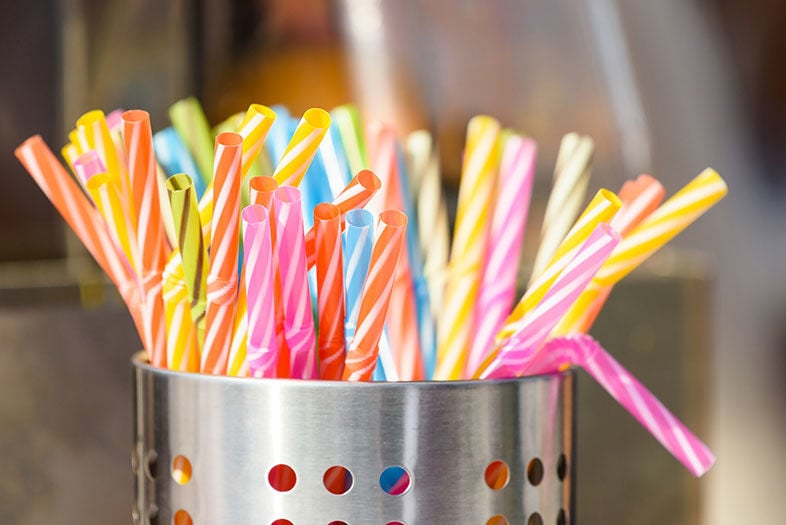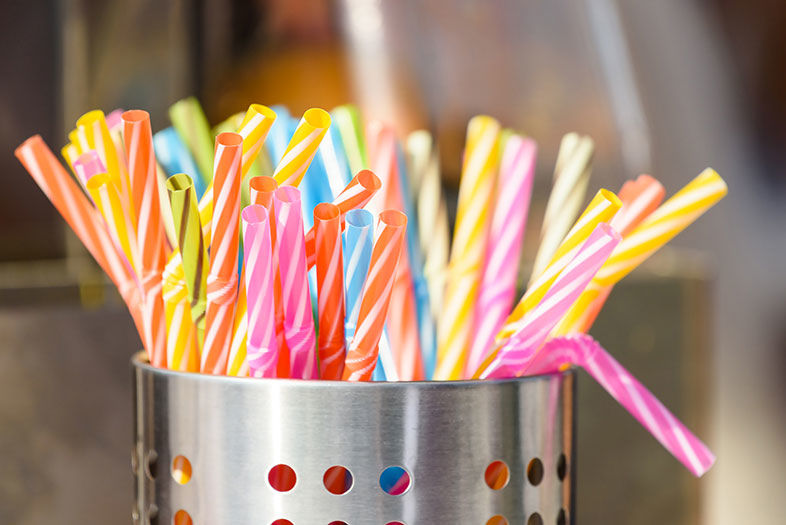As I wrote a couple weeks ago, I recently completed a 10-Day No-Plastic Challenge. It changed me. I’ll post some of my findings here. Made me think about things I hadn’t previously considered.
I’ve never understood straws. If you’re drinking something worth drinking, the straw gets in the way. It’s like a fire hose designed to rush liquid past all the parts of your mouth that could appreciate its charms. Right past the sweet part (tip of the tongue), the salty (front sides), sour (middle). Basically you’ll only get the bitter (back of the tongue).
Sure, the simple engineering is exciting for kids. And they can be used to stir drinks that naturally break down into component parts (whiskey and soda, for example). But couldn’t a small spoon also be used, one that’s washable? Reusable? Ones that won’t float in the ocean and get stuck in a turtle’s nose, as this now-famous video shows (warning, it’s painful to watch).
The average plastic straw has a lifespan of 20 minutes, and then it’s thrown into the landfill, where it lives forever. One oft-cited estimate is that Americans use 500 million straws a day. A day. That’s 182,500,000,000 (182.5 trillion) straws a year.
Plastic straws are the pinky toe of beverage consumption—absolutely useless, unnecessary, except for a small portion of Americans who need to use them for medical purposes. California has already banned plastic bags. Straws will certainly be next. The city of Malibu already did it. On June 1, restaurants and other businesses will have to get rid of their plastic for reusable, biodegradable straws and cutlery. Davis, San Luis Obispo, Seattle, Miami, and Fort Meyers are also banning plastic straws.
San Diego should join those ranks. This isn’t a hippie thing. It’s economics. Of those cities, San Diego has the most to lose when beaches get trashy. People don’t come to San Diego for the skiing. They come for the beach. It is our Mall of America, our Statue of Liberty, our Yellowstone. Visitors spend $10.8 billion in town every year, and our coastlines are responsible for attracting at least a few billion of that. San Diego spends $14 million every year cleaning up beaches (LA spends $36 million). And straws are the sixth most common trash item on beaches (plastic bottles are first, by a country mile).
Some people claim a fear of germs is why people use straws. They don’t want to drink directly from a cup that’s been used by a previous customer. But here’s news for you. That public door handle you just touched has far more germs than the lip of a well-washed glass. And there is ample evidence that being exposed to low levels of germs is actually better for our immune systems.
There are options, some of them explored and used by local restaurateurs:
1. Tell them to hold the straw
During my 10-Day No-Plastic Challenge, I realized how many places (bars, especially) automatically give you a straw. So when I ordered water or a cocktail, I learned to say, “Margarita on the rocks, hold the straw.” A friend pointed out Corvette Diner as the biggest offender, since they have a practice of throwing multiple plastic straws at customers. Cohn Restaurant Group is a good operator, though I’d urge them to find another way to have fun with their guests. “We’ve gone to straws on demand at most of our locations, especially our beach locations,” says owner David Cohn. “We’re also working on a ‘new tradition’ for the Covervette Diner. We’ve been working with Surfrider for some time and 95% of our restaurants are certified OFR (Ocean-Friendly Restaurants).”
2. Stop auto-strawing
Restaurants and bars need to stop automatically giving out plastic straws until San Diego finally bans them. Straws upon request only.
3. Shame your bartender
One of the core tenets of hospitality is giving customers what they want. If enough people express it to restaurants and bars, change will happen. It’s simple. “I’ll take this drink, please hold the straw. You guys should consider getting rid of straws.” Don’t need to stand on the bar and delivery a sanctimonious screed. A polite expression of “straws suck” is good.
4. Use paper straws
OK, let’s all agree to throw this solution out. Paper straws are the worst. They get all soggy at the tip, lose their form, feel kinda gross in your mouth. Not all noble pursuits work out.
5. Use metal straws
You & Yours Distilling Co. in San Diego uses these. “They’re more expensive than disposable ones,” says You & Yours owner Laura Johnson. “And we have to wash them a very specific way for the Health Department. Meaning we rarely have enough at any given time. We have them clean and handy, you might get one in your drink, but they very well may be making their way through a wash. And you’ll definitely get a few stolen. But we only serve drinks with straws upon request, so it’s only a really small piece of our drinks program. We use them to ‘straw’ or test drinks before they go out so that we’re not throwing away a bunch of plastic straws every night.” You & Yours is a tasting room, not a high-volume bar, so it’s easier for them to take this measure. Other proprietors say they’ve explored using metal straws, but it’s too cost-prohibitive.
6. Use pasta straws
Genius. These exist, sold commercially by the Pasta Straw company in Gardena, California. They’re made of flour and water, which are dirt cheap ingredients. Unlike paper straws, they maintain their structural integrity while you drink. And since they’re made of flour and water, you can either eat your straw or add it to the compost. Very low impact on the environment.
The Surfrider Foundation has a list of “Ocean-Friendly Restuarants” in San Diego, which is a good resource for those who think this matters.

San Diego, It’s Time to Ban Plastic Straws
California has already banned plastic bags. Straws should be next.


















